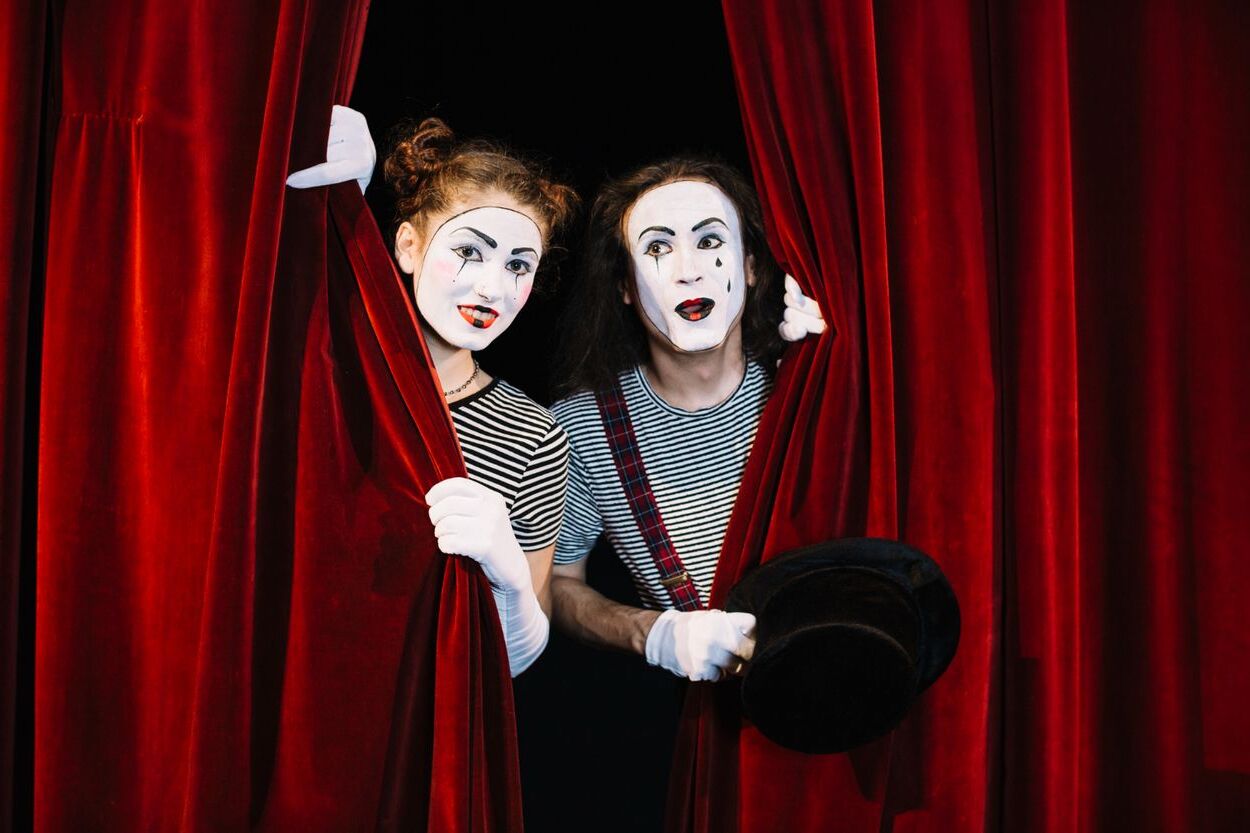
Mimes have fascinated audiences for centuries with their silent storytelling and expressive movements. But what do we really know about these performers who speak volumes without uttering a single word? Mimes are more than just street performers; they have a rich history and a set of unique skills that make them stand out in the world of entertainment. From their origins in ancient Greece to their evolution in modern-day theater, mimes have a lot of interesting facts that might surprise you. Whether you're curious about their techniques, famous mimes throughout history, or the cultural impact they've had, this list of 28 facts will give you a deeper appreciation for the art of mime.
The Origins of Mime
Mime, a form of silent art, has a rich history. Let's explore some fascinating facts about this unique performance style.
-
Ancient Roots: Mime dates back to ancient Greece and Rome, where performers used gestures to tell stories without words.
-
Greek Influence: The word "mime" comes from the Greek word "mimos," meaning "imitator" or "actor."
-
Roman Pantomime: In Rome, pantomime was a popular form of entertainment, combining dance, music, and expressive gestures.
-
Medieval Revival: During the Middle Ages, mime saw a resurgence in Europe, particularly in Italy and France.
Famous Mime Artists
Several artists have left an indelible mark on the world of mime. Here are some notable figures.
-
Marcel Marceau: Perhaps the most famous mime artist, Marcel Marceau, created the iconic character Bip the Clown.
-
Jean-Gaspard Deburau: A 19th-century French mime, Deburau popularized the character Pierrot.
-
Charlie Chaplin: Though known for silent films, Chaplin's physical comedy and expressive gestures are rooted in mime traditions.
-
Jacques Lecoq: A French actor and mime, Lecoq founded a school that trained many successful performers.
Mime in Modern Culture
Mime continues to influence contemporary art and entertainment. Here are some ways it has left its mark.
-
Street Performances: Mimes are a common sight in cities worldwide, entertaining passersby with their silent acts.
-
Circus Acts: Many circus performers incorporate mime techniques into their routines.
-
Theatre: Modern theatre often uses mime to convey complex emotions and stories without dialogue.
-
Film and Television: Mime has influenced various visual storytelling forms, from silent films to modern TV shows.
Techniques and Training
Mime requires a unique set of skills and rigorous training. Let's look at some key aspects.
-
Body Control: Mimes must have excellent control over their bodies to convey emotions and actions convincingly.
-
Facial Expressions: Expressive facial movements are crucial for mimes to communicate without words.
-
Illusionary Techniques: Mimes use techniques like the "invisible wall" to create the illusion of interacting with unseen objects.
-
Physical Endurance: Performing mime can be physically demanding, requiring strength and stamina.
Mime Around the World
Mime is a global art form with variations in different cultures. Here are some examples.
-
Japanese Noh Theatre: This traditional form of Japanese theatre incorporates mime-like elements.
-
Indian Kathakali: A classical dance-drama from India, Kathakali uses expressive gestures similar to mime.
-
Chinese Opera: Chinese opera performers often use mime techniques to enhance their storytelling.
-
European Street Theatre: Many European cities have a rich tradition of street theatre, where mime plays a significant role.
Mime in Education and Therapy
Mime isn't just for entertainment; it also has educational and therapeutic applications.
-
Drama Classes: Many drama programs include mime to help students develop their physical acting skills.
-
Speech Therapy: Mime techniques can aid in speech therapy by encouraging expressive communication.
-
Physical Therapy: Mime exercises can improve motor skills and coordination in physical therapy patients.
-
Emotional Expression: Mime can help individuals express emotions they might find difficult to verbalize.
Fun Facts About Mime
Here are some quirky and lesser-known facts about mime that might surprise you.
-
World Mime Day: Celebrated on March 22, this day honors the art of mime and its practitioners.
-
Silent Film Influence: Many early silent film actors were trained in mime, influencing the film industry's development.
-
Mime in Advertising: Some companies use mime in commercials to create memorable and engaging ads.
-
Mime Competitions: There are international competitions where mimes showcase their skills and creativity.
Mime's World in a Nutshell
Mimes have a rich history and a unique way of communicating without words. From their origins in ancient Greece to their modern-day performances, mimes captivate audiences with their silent storytelling. They use exaggerated expressions and movements to convey emotions and narratives, making them masters of non-verbal communication. Famous mimes like Marcel Marceau have left a lasting impact on the art form, inspiring new generations of performers. Whether performing on the streets or in theaters, mimes continue to entertain and amaze with their creativity and skill. So next time you see a mime, take a moment to appreciate the artistry and effort behind their silent performance. It’s a fascinating world that speaks volumes without uttering a single word.
Was this page helpful?
Our commitment to delivering trustworthy and engaging content is at the heart of what we do. Each fact on our site is contributed by real users like you, bringing a wealth of diverse insights and information. To ensure the highest standards of accuracy and reliability, our dedicated editors meticulously review each submission. This process guarantees that the facts we share are not only fascinating but also credible. Trust in our commitment to quality and authenticity as you explore and learn with us.
